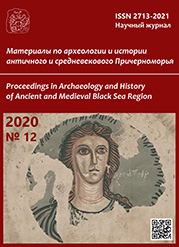The cultures of the Early Iron Age in China as a part of the Scythian World
The cultures of the Early Iron Age in China as a part of the Scythian World
Author(s): Petr I. Shulga, Daniil ShulgaSubject(s): Archaeology
Published by: Нижневартовский государственный университет
Keywords: Scythian world; Sakas; Wusuns; Early Iron Age;
Summary/Abstract: Based on archaeological and written sources, the authors characterizes the two ethno cultural regions of the 9th — 3rd centuries BCE that developed in the east of the Scythian world — in Xinjiang and North China. In the 9th — 8th centuries BCE there, in local cultures of transitional appearance, burial complexes with “Scythian triad” individual elements in the Animal style in a horse bridle are recorded. It is obvious that both of these areas were the early Scythian cultures formation centers like the center in Tyva. At the same time, according to all sources, the Animal style was brought to the China territory from Mongolia. Due to natural factors, in these areas up to the 2nd century BCE Scythian cultures developed almost in isolation from each other in contact with the adjacent Kazakhstan, Southern Siberia and Mongolia regions. In the second half of the 4th century BCE the northern part of Xinjiang (including the Tien Shan) get closed culturally with Pazyryk culture of Altai, and then to the Sakas and Wusuns of Kazakhstan. At this time the North China cultures were in close contact with South Siberia population. At the same time, some Scythian-like features were preserved in them until 3rd — 2nd centuries BCE, even after the Han and Xiongnu empires formation at the end of the 3rd century BCE.
Journal: Материалы по археологии и истории античного и средневекового Причерноморья
- Issue Year: 2020
- Issue No: 12
- Page Range: 111-147
- Page Count: 37
- Language: English

